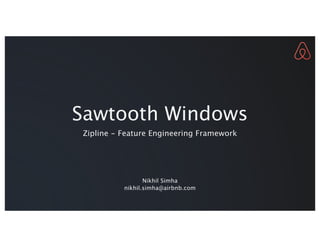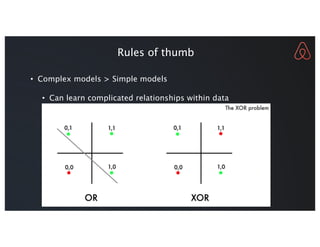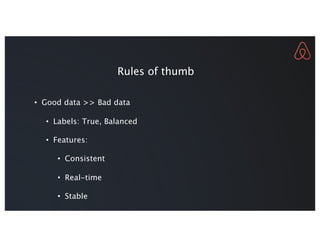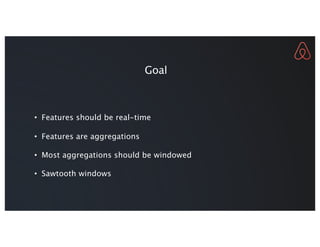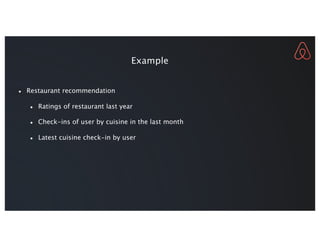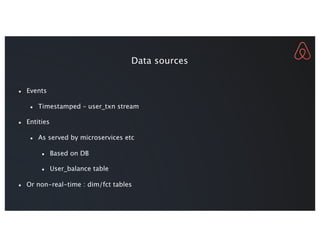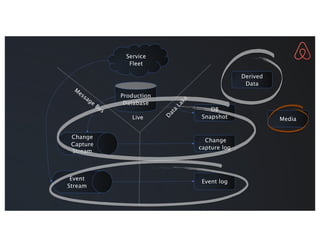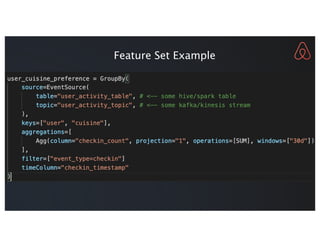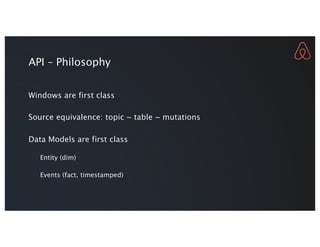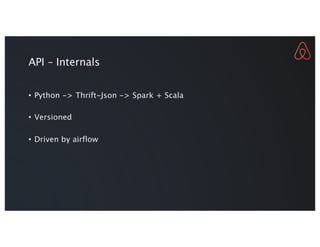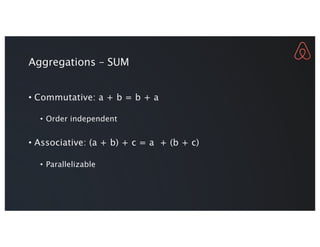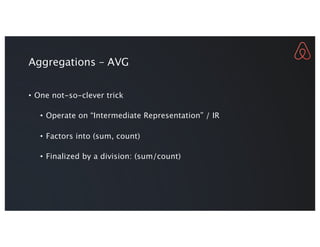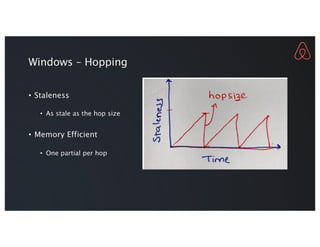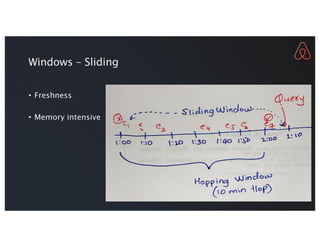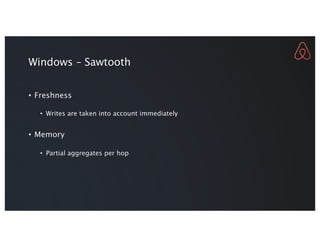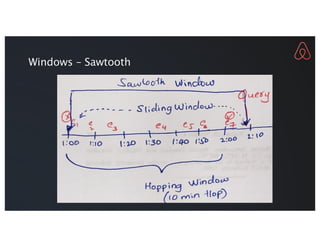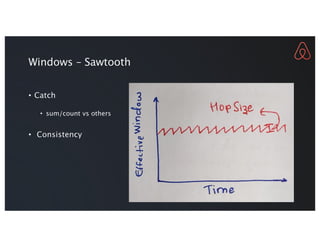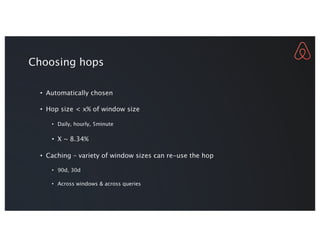Sawtooth Windows for Feature Aggregations
- 1. Sawtooth Windows Zipline - Feature Engineering Framework Nikhil Simha nikhil.simha@airbnb.com
- 2. • Machine Learning • Supervised • Structured data – database records, event streams • Not unstructured data – images, video, audio, text • Not labels Features in context
- 4. • Complex models > Simple models • Can learn complicated relationships within data Rules of thumb
- 5. • Good data >> Bad data • Labels: True, Balanced • Features: • Consistent • Real-time • Stable Rules of thumb
- 6. • Simple models + good data >> Complex models + Bad data • Effort to better data >> Effort to better model • Realtime features are hard • Windowed Aggregations are unsupported/inefficient • Training/Serving consistency Rules of thumb
- 7. • Inadequate data sources • Event sources: Don’t go back in history • Database sources: Range scans are very expensive • Skill gap • ML vs system engineering • Missing Backfills - Slow iteration Hardness of Realtime features
- 8. • Features should be real-time • Features are aggregations • Most aggregations should be windowed • Sawtooth windows Goal
- 9. Example ● Restaurant recommendation ● Ratings of restaurant last year ● Check-ins of user by cuisine in the last month ● Latest cuisine check-in by user
- 10. Checkins Ratings 1 1 1 3 Time 1 2 4 Label L Prediction P1 P2 3 3 4 2.5 L L Training data set
- 11. Contract ● Serving ● User, Restaurant -> avg_restaurant_rating_1yr, cuisine_visits_30d ● Training ● Labeled Data: (User, Restaurant, timestamp, label) ● Enrich with features
- 12. Data sources ● Events ● Timestamped – user_txn stream ● Entities ● As served by microservices etc ● Based on DB ● User_balance table ● Or non-real-time : dim/fct tables
- 17. API – Philosophy • SQL is two languages • Keep Expression Language • CAST(get_json_object(response, “$.age”) AS BIGINT) • Control Structural language • GROUPBY, JOIN, HAVING, SELECT, WHERE, FROM
- 18. API – Philosophy Windows are first class Source equivalence: topic ~ table ~ mutations Data Models are first class Entity (dim) Events (fact, timestamped)
- 19. API – Internals • Python -> Thrift-Json -> Spark + Scala • Versioned • Driven by airflow
- 20. Aggregation Math
- 21. Aggregations – SUM • Commutative: a + b = b + a • Order independent • Associative: (a + b) + c = a + (b + c) • Parallelizable
- 22. Aggregations – AVG • One not-so-clever trick • Operate on “Intermediate Representation” / IR • Factors into (sum, count) • Finalized by a division: (sum/count)
- 23. Aggregations • Constant memory / Bounded IR • Two classes of aggregations • Sum, Avg, Count • Min/Max, Approx Unique, percentiles, topK • Mutations – updates, deletes etc.
- 25. Windows – Hopping • Staleness • As stale as the hop size • Memory Efficient • One partial per hop
- 26. Windows – Sliding • Freshness • Memory intensive
- 27. Windows – Sawtooth • Freshness • Writes are taken into account immediately • Memory • Partial aggregates per hop
- 29. Windows – Sawtooth • Catch • sum/count vs others • Consistency
- 31. Windows – Lambda • Points of change
- 32. Windows – Lambda
- 33. Choosing hops • Automatically chosen • Hop size < x% of window size • Daily, hourly, 5minute • X ~ 8.34% • Caching – variety of window sizes can re-use the hop • 90d, 30d • Across windows & across queries
- 34. Questions
